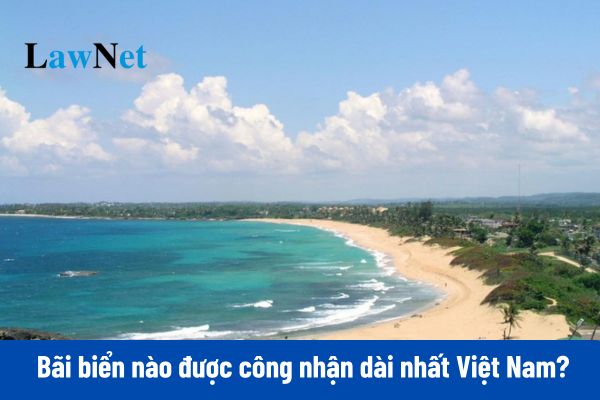Which beach is recognized as the longest one in Vietnam? What are the features of the Geography subject in Vietnam?
Which beach is recognized as the longest one in Vietnam?
Currently, Vietnam boasts many beautiful beaches with clear waters, frequently recognized and praised by international media and adored by tourists. With a coastline on the mainland totaling a length of 3,260 km, Vietnam is home to many famous beaches such as those in Hue, Da Nang, Nha Trang, Phu Quoc, Quy Nhon, and in the northern region, Ha Long, Quang Ninh...
However, few may know which beach among these is recognized as the longest in Vietnam. In fact, the longest beach in Vietnam is located in the northern region, quite close to the capital, Hanoi, approximately 300 km away, in Quang Ninh. That is Tra Co Beach. The Vietnam Record Organization recognizes Tra Co as the longest beach in Vietnam, with a length of over 17 km.
Tra Co Beach, located in the city of Mong Cai, Quang Ninh province, is recognized as the longest beach in Vietnam, stretching over 17 km. Tra Co has a crescent shape, extending from Mui Got in the North to Mui Ngoc in the South, creating a vast area with a width of approximately 170 hectares. This is an ideal destination for tens of thousands of tourists each year who wish to enjoy the fresh air and the pristine natural scenery.
Geographically, Tra Co is situated at the northeastern tip of Vietnam, near the Vietnam-China border, considered the "headland" beach of the country. If starting from Ha Long city, a distance of about 200 km is required to reach here. Meanwhile, the distance from the center of Mong Cai City to Tra Co is only about 8 km, making it very convenient to explore the beach during a trip to Mong Cai. This destination is attractive not only for its natural beauty but also for its special geographical location.
Thus, Tra Co Beach is recognized as the longest one in Vietnam.

Which beach is recognized as the longest one in Vietnam? What are the features of the Geography subject in Vietnam? (Image from the Internet)
What are the features of the Geography subject in Vietnam?
Under section 1 of the General education program in Geography issued under Circular 32/2018/TT-BGDDT, the features of the Geography subject in Vietnam are as follows:
- Geography education is implemented at all levels of general education. In primary and lower secondary levels, geography education content is integrated into the History&Geography subject.
- In the upper secondary level, Geography is a subject within the social science group, selected based on student's interests and career orientation.
- Geography is part of both social sciences (Economic-Social Geography) and natural sciences (Physical Geography), helping students gain a basic understanding of geographical sciences, related occupations, and the ability to apply geographical knowledge in life;
Simultaneously, it consolidates and expands the core general knowledge and skills foundation formed in the basic education stage, providing a solid basis for students to continue in geography-related careers.
What are the orientations to the educational methods for Geography in Vietnam?
According to section 7 of the General education program in Geography issued under Circular 32/2018/TT-BGDDT, the orientations to the educational methods for Geography in Vietnam are as follows:
- Assessment of educational outcomes in Geography aims to provide precise, timely, and valuable information on the level of meeting the program's requirements and students' progress to guide learning activities.
- The basis for assessing students' educational outcomes is the achievement standards on quality and competency stipulated in the overall program and the Geography curriculum.
- Regarding assessment content, beyond assessing knowledge, it is necessary to enhance the assessment of students' skills such as: working with maps, atlases, charts, diagrams, data tables, pictures, observation, collecting, processing, and systematizing information, using outdoor learning tools, and employing technology and communication in learning..., focusing on assessing the ability to apply knowledge to specific situations.
- Diversifying assessment forms, and increasing regular assessments for all students shall be conducted through various means, combining teacher assessments with self-assessment and peer assessment among students.
- Educational outcomes are assessed through qualitative and quantitative forms via regular and periodic assessments, thereby aggregating the overall assessment of students' quality, competence, and progress.

